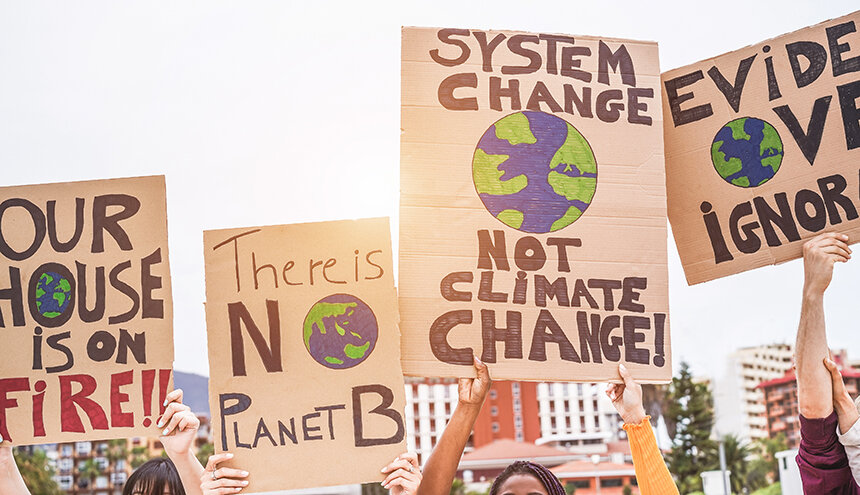Study Finds Wealthy White Homeowners Benefit Most from Land Conservation
April 26, 2023
Concern about environmental and social injustices is spreading, but little research documents how the benefits of land conservation are distributed among different groups of people. In fact, the findings of a new study reveal efforts are likely needed to account for human inequities while continuing land conservation needed for ecological reasons.
Protecting open space from development increases the value of surrounding homes, but a disproportionate amount of that newly generated wealth goes to high-income white households, according to the study published recently in the Proceedings for the National Academy of Sciences.
Land conservation projects do more than preserve open space, ecosystems, and wildlife habitat. These preservation projects can also boost property values for nearby homeowners, and those financial benefits are unequally distributed among demographic groups in the United States.
The study, by researchers from the University of Rhode Island and University of Illinois Urbana-Champaign, found that new housing wealth associated with land conservation goes disproportionately to people who are wealthy and white.
In Massachusetts, for example, white households in the top wealth quartile received 43% of the roughly $63 million housing wealth generated by land conservation from 1998 to 2016. That is 140% more than would be expected under an equal demographic distribution, the researchers found.
“There’s a lot of economic inequality in the U.S. and we show that, unfortunately, conservation is adding to that,” said Corey Lang, a professor of environmental and natural resource economics at URI and a study co-author. “That’s not to say that conservation is bad, or that we shouldn’t do it. Our primary purpose with this study was to document these disparities, and hopefully spark some debate about it.”
The U.S. Forest Service estimates that about 6,000 acres of open space in the United States are cleared for development every day. But across the country, organizations such as land trusts are working to preserve land, protecting it from future development in perpetuity. During the past 35 years, more than $80 billion in conservation funding has been approved by municipal referenda, according to the researchers.
Those conservation efforts produce amenities that are attractive to homeowners. Conserved land provides peace and quiet, beautiful views, and recreation opportunities that are guaranteed. The value of those amenities is reflected in higher property values for people living in the area.
“Economists have studied this for a long time as a means of understanding how people value land conservation efforts, which can be fed into a cost-benefit analysis to see if new conservation efforts are justified,” Lang said. “We take a different approach in that we look at which homeowners are more likely to receive that bump in equity.”
To do that, the researchers looked at detailed conservation records and anonymized demographic data for homeowners in Massachusetts. The team used an econometric model to estimate the extent to which land conserved between 1998 to 2016 added to the value of properties within a quarter-mile of conservation areas. They found that each acre of conserved land increases the value of nearby homes by 0.018%. That means that a median-priced Massachusetts home near 10 acres of conserved land gets a bump in value of nearly $660. That translates into roughly $62 million in conservation-related property wealth gains over the study period.
Looking at the demographic breakdown of the homeowners who received that new wealth, the researchers found that 91% went to white homeowners, and 40% went to households in the highest wealth quartile. Roughly 43% went to households that were both white and in the highest wealth category.
In stark contrast, Black and Hispanic households in the lowest wealth quartile received only 6% of the benefits that would be expected under an equal distribution.
The results aren’t necessarily attributable to any active or implicit discrimination on the part of conservation groups, according to Lang. The results can be shaped, for instance, by several factors that yield patterns in where people live, with Black, Hispanic, and Asian households being less likely to own homes near conservation areas. Those patterns can emerge from racial and ethnic patterns of urban versus rural living, and a lack of conserved land in urban areas. There are also longstanding racial gaps in overall home ownership.
Though the highly detailed data available for Massachusetts simply isn’t available for the rest of the country, the team of researchers performed an additional study to see if the Massachusetts trends hold nationwide. They found that of the $9.8 billion in property wealth generated by conservation from 2001 to 2009, 89% went to white households, 9% to Black and Hispanic households, and 2% to Asian households.
“Economists have done a lot to document disparities in exposure to pollution, but we know much less about equity in the distribution of the benefits from investments in valuable nature conservation,” said Amy Ando, a study co-author who is a professor of environmental and natural resource economics at the University of Illinois Urbana-Champaign. “These findings make clear there can be large environmental justice issues in who gains from the environmental goods we provide and protect, and may serve as a call for more research identifying other such inequities.”
Taken together, the researchers say, the results show land conservation plays a role in maintaining wealth disparities. They hope the findings will broaden the conversation about land preservation.




I have mixed thoughts about this. Protected land is good for neighbohoods. The increase in property values does generate further inequality. Community gardens increase nearby property values. So do city parks. So the rise in inequality is not a reason to stop protecting land. We need to protect more of it. But it means we must consciously redistribute the economic benefits protecting land generates.
So Gregg how exactly do you do that? If a town voted to set aside 2 million dollars for land conservator, isn’t that $ ultimately coming from the people in that town that pay the taxes. I get that there is greater benefit to certain groups but, I personally believe it beats the alternative of developing all the land. Clean air, water, species diversity benefits all inmy opinion.
so what? Should we not protect land and allow development to lower adjacent values? Forget about the wildlife?
this can be used as an excuse by developers to destroy natural landscapes.
But it should reinforce efforts to protect green space in lower income areas too (Morely field? Central Falls landing…